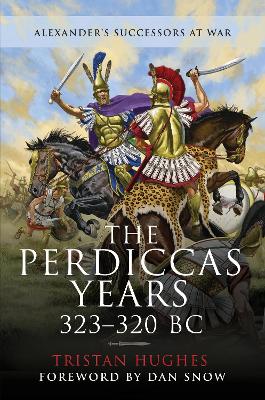Reviewed by annieb123 on
The Perdiccas Years, 323–320 BC is a comprehensive scholarly look at the Diadochi, the generals and rivals who succeeded Alexander the Great on his death in 323BCE. Due out 31st March 2022 from Pen & Sword, it's 384 pages (in hardcover) and will be available in hardcover and ebook formats.
The author writes accessibly but meticulously, and builds up the necessary background context for the compelling history of the time and manages to humanize the major players despite the intervening millennia. He's chosen a chapter format which moves thematically (and roughly chronologically), through the military campaigns and jockeying for power which came after Alexander's death: the Lamian war(s), Bactrian, Thracian, Spartans, Perdiccas, and the Aetolian war amongst others. I'm not a historian, and many of these campaigns were previously unknown to me in any but the most general (haha) terms. He's included a very handy dramatis personae/glossary in the back of the book which proved invaluable to my understanding comprehension. I strongly recommend printing it out or using the search function on whatever electronic device readers use to make the whole read easier.
The book is meticulously annotated throughout. The author has cited period primary sources and later scholarly research to support the narrative. There are copious chapter notes, an exhaustive bibliography, maps, photos (of period artifacts) and a cross referenced index.
The author has a casual academic style of writing; accessible and careful, with proper annotation, but not overly convoluted or impenetrably difficult to read. It sounds rather simplistic to say I really loved the maps and pictures, but I really loved all the maps and pictures.
Five stars. This would be a great selection for fans of military history, as well as a superlative support text for related academic studies on the time period. This is listed as the first book in a series of historical studies of the time period. I'm looking forward to seeing what comes next.
Disclosure: I received an ARC at no cost from the author/publisher for review purposes.
Reading updates
- Started reading
- 9 February, 2022: Finished reading
- 9 February, 2022: Reviewed
